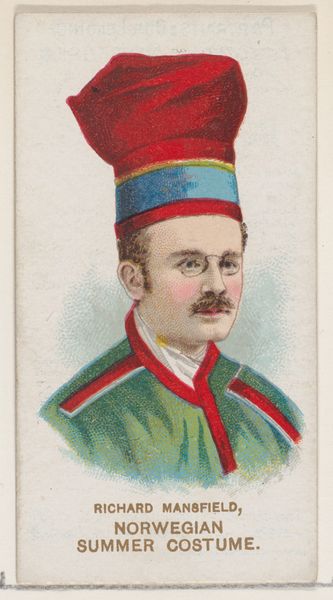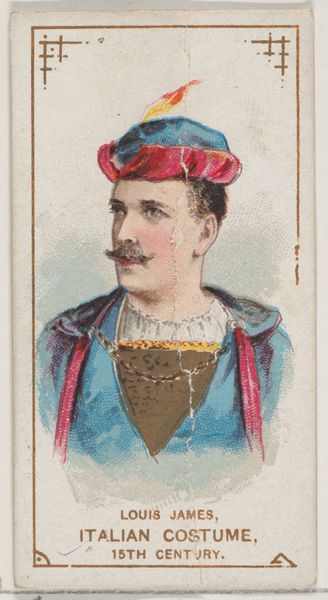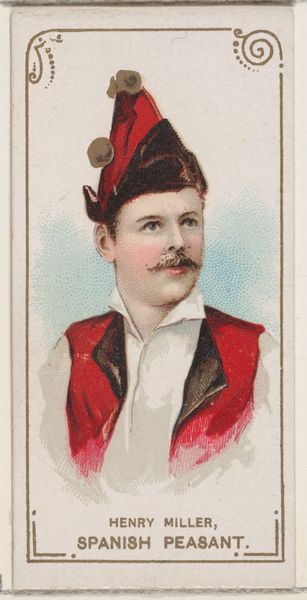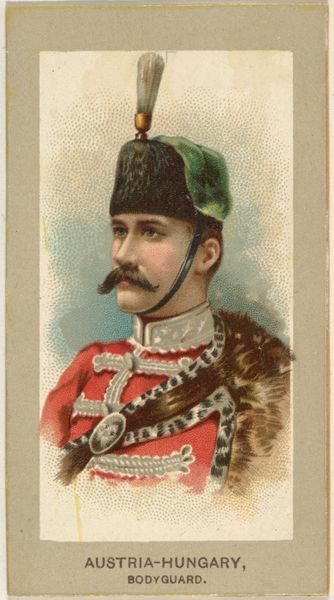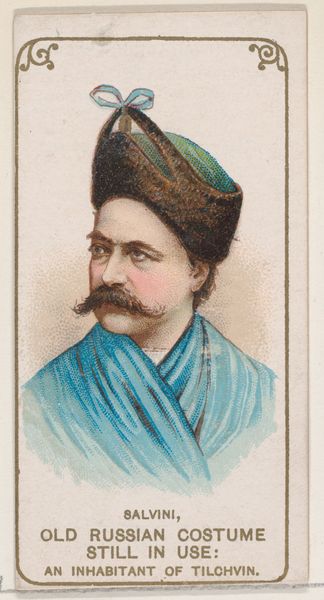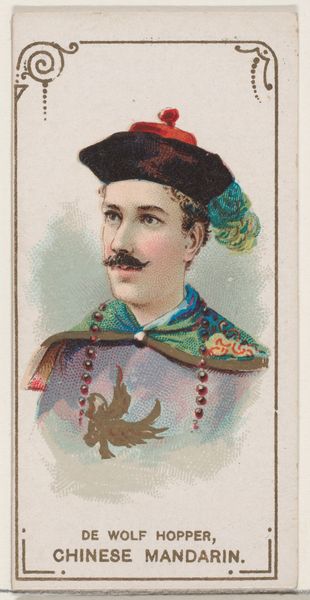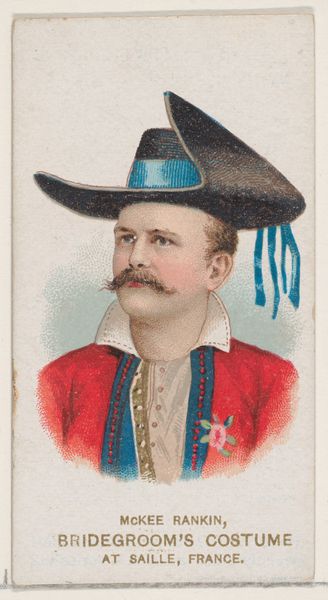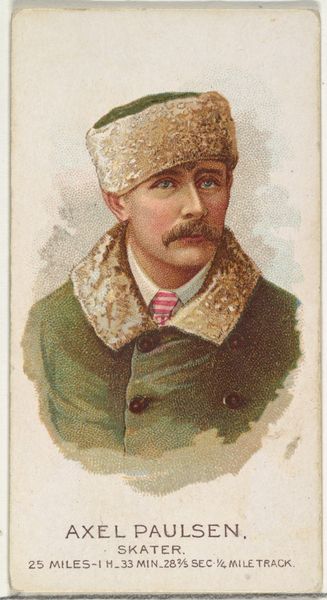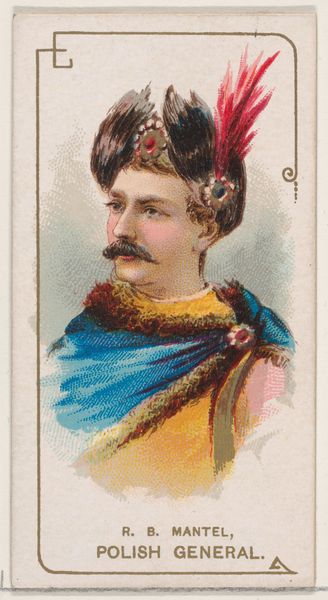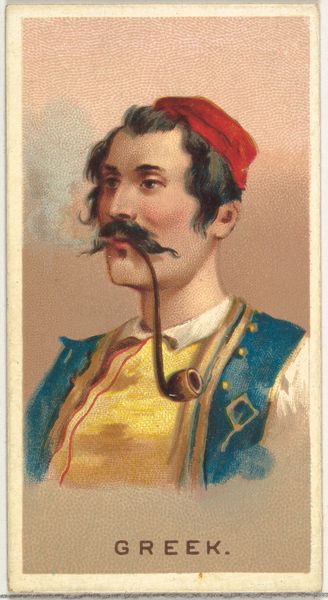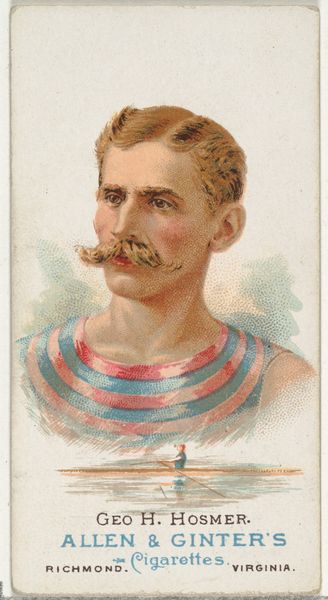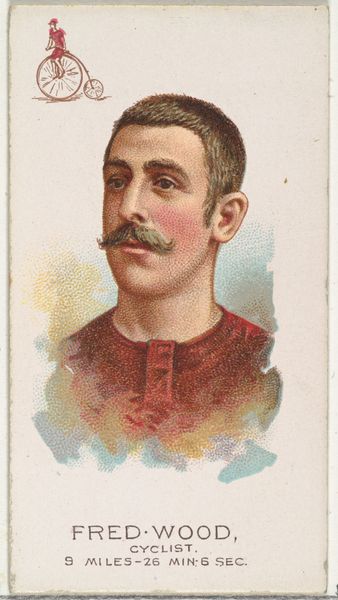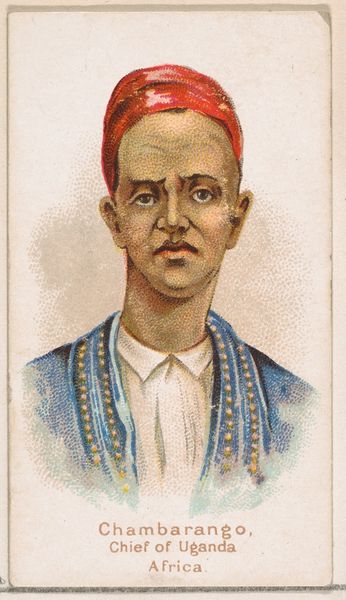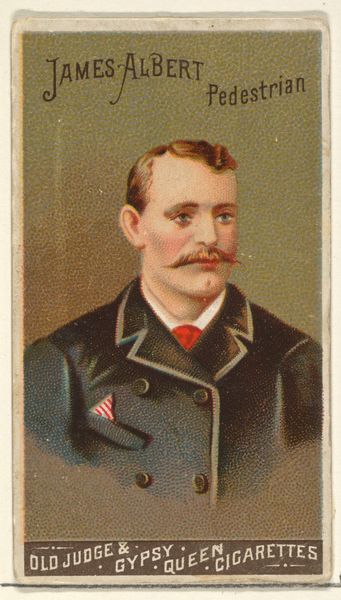
Eben Plympton Dressed as Turkish Footman, from the set Actors and Actresses, Second Series (N71) for Duke brand cigarettes 1888 - 1890
0:00
0:00
drawing, print
#
drawing
#
toned paper
# print
#
caricature
#
portrait reference
#
coloured pencil
#
men
#
animal drawing portrait
#
portrait drawing
#
watercolour illustration
#
portrait art
#
watercolor
#
fine art portrait
Dimensions: Sheet: 2 3/4 x 1 1/2 in. (7 x 3.8 cm)
Copyright: Public Domain
Editor: So, here we have “Eben Plympton Dressed as Turkish Footman,” a print from 1888-1890 by W. Duke, Sons & Co., originally for Duke brand cigarettes. It has this almost...theatrical air, like a caricature, but there's also a strangeness to the way he’s styled as a Turkish Footman. What’s your read on it? Curator: It's fascinating how these cigarette cards participated in shaping perceptions of identity and otherness in the late 19th century. Consider how the mass production and distribution of these images through commercial means like tobacco functioned as a visual form of popular education, normalizing certain views of ethnicity and profession. Do you notice anything specific about the details chosen to represent this “Turkish Footman?" Editor: Well, the fez, the vest, they’re... stereotypical, right? Curator: Precisely! They are signifiers designed to communicate "Turkishness," however simplified. The portrayal here is not just about depicting an actor; it reflects how Western audiences at the time consumed and understood other cultures. These images weren’t just innocent collectibles. They reinforced hierarchies and often exoticized foreign cultures for entertainment and marketing purposes. Think about the power dynamics at play when a tobacco company uses a character like this to sell its product. Editor: So, it’s less about accurate representation and more about reinforcing existing social narratives and power structures? Curator: Exactly! The circulation of such imagery played a significant role in constructing and maintaining those structures, shaping public opinion, and influencing social norms about cultural identities. Editor: It makes me think about representation in media today. I never considered the historical parallel to cigarette cards. Curator: This small image offers a peek into the intricate dance between commerce, representation, and the public consumption of identity in a particular historical moment. There are lasting implications in this for advertising.
Comments
No comments
Be the first to comment and join the conversation on the ultimate creative platform.
